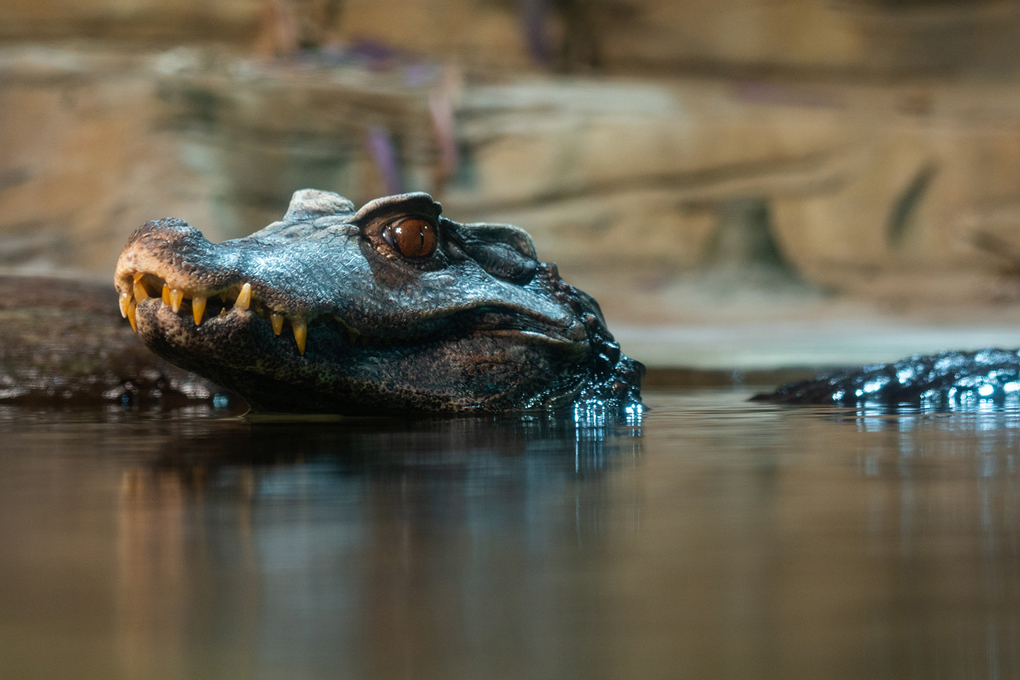Paleosuchus palpebrosus
Fast Facts
- Other crocodilians are hunted for their skin, but the dwarf caiman’s skin is so bony that it does not make good leather.
- Dwarf caimans are a keystone species, meaning they keep many other animal populations in check by preying on them.
- Dwarf caimans are ambush predators, sitting in wait for food to come close to them instead of chasing it.
- Cuvier’s dwarf caimans are found in 11 countries.


Range
Northern and Central South America

Habitat
Freshwater rivers in forests

Size
4-6 feet long

Nutrition
fish, crabs, frogs, small mammals, shrimp, insects
Characteristics
Females are smaller than males, averaging at 4 feet in length while males range from 5-6 feet. The dwarf caiman looks similar to many of its crocodilian relatives but is the smallest of them all. Its skin is thick, leathery, and dark greenish-brown. This thick skin acts as an armor. Its eyes are dark red and located on the top of its head. This helps the caiman keep its body submerged but still able to see above water. Its teeth are very sharp and are still visible even when the animal’s mouth is closed.
Behavior
The dwarf caiman will spend most of its time sitting in water. During the day, it basks in the sun to keep warm and during the night it sits still to hunt. The caiman conserves energy using an ambush strategy, it does not chase its prey. This caiman species is nocturnal, taking advantage of the dark to increase their ability to hide from prey. They live in fast-moving, cool streams in forested areas but can also be found near rapids and waterfalls.
Reproduction
Female dwarf caimans lay 10-25 eggs in a nest made of forest floor debris, like leaves and sticks. The female will guard the nest until it hatches, about 3 months. Like many other reptiles, the temperature of the caiman eggs determines if the baby will be male or female. The lifespan of this species is about 25 years.

